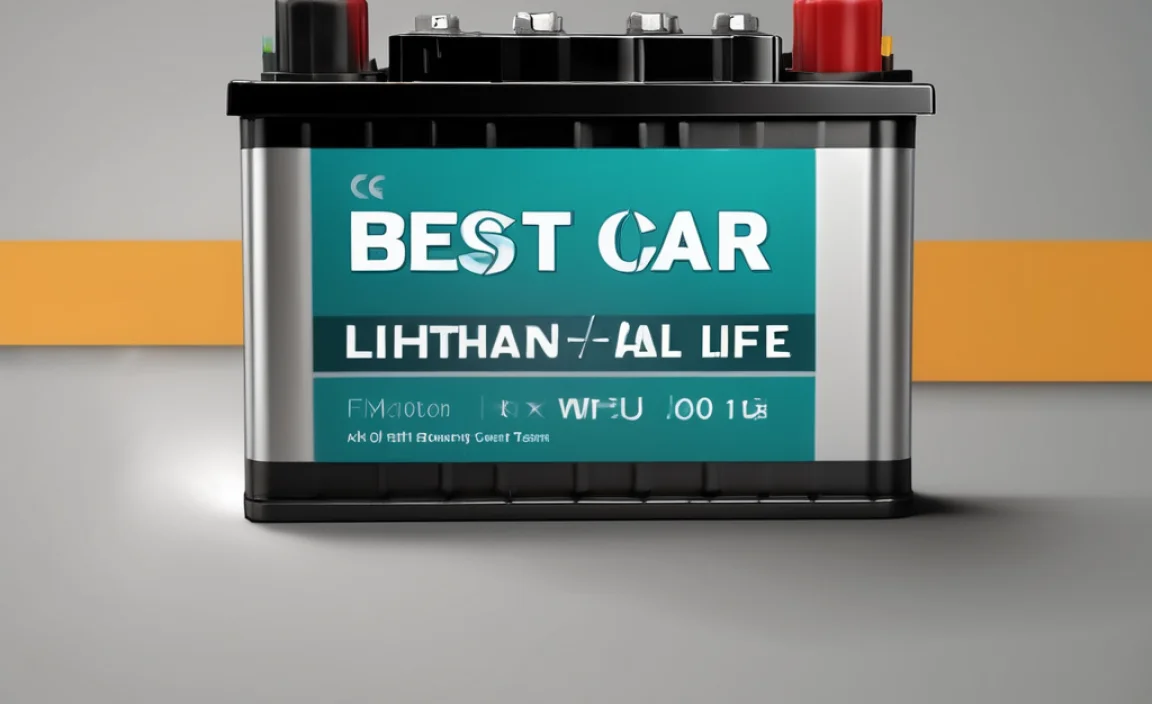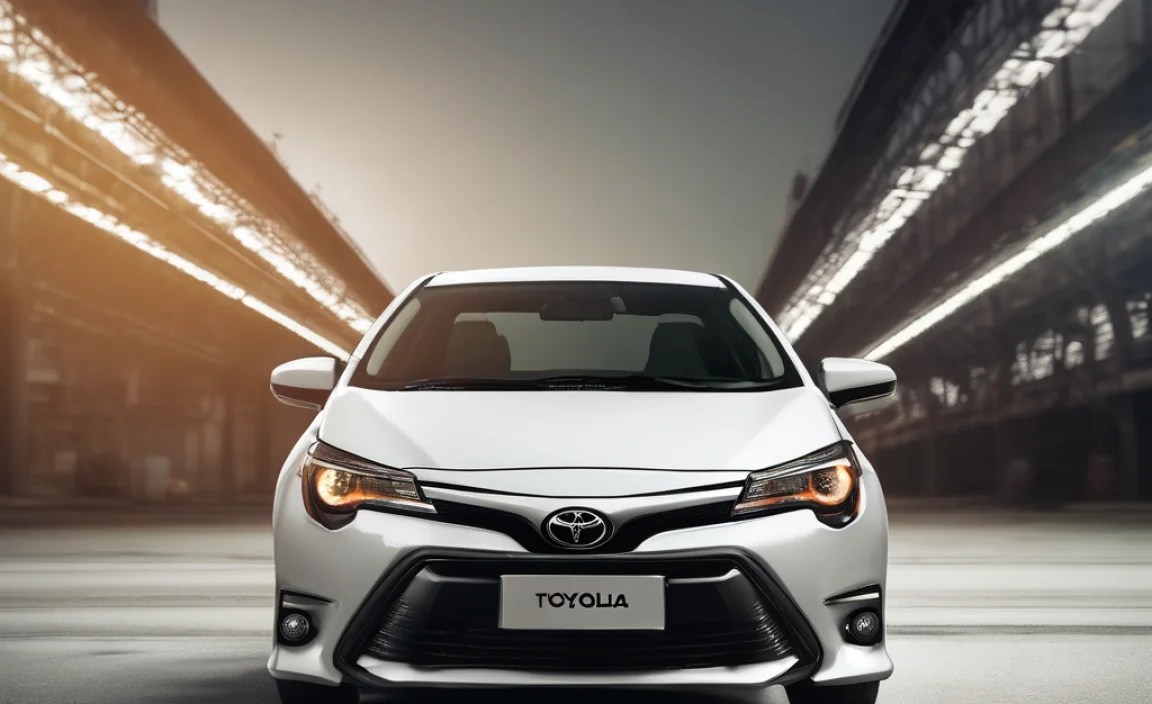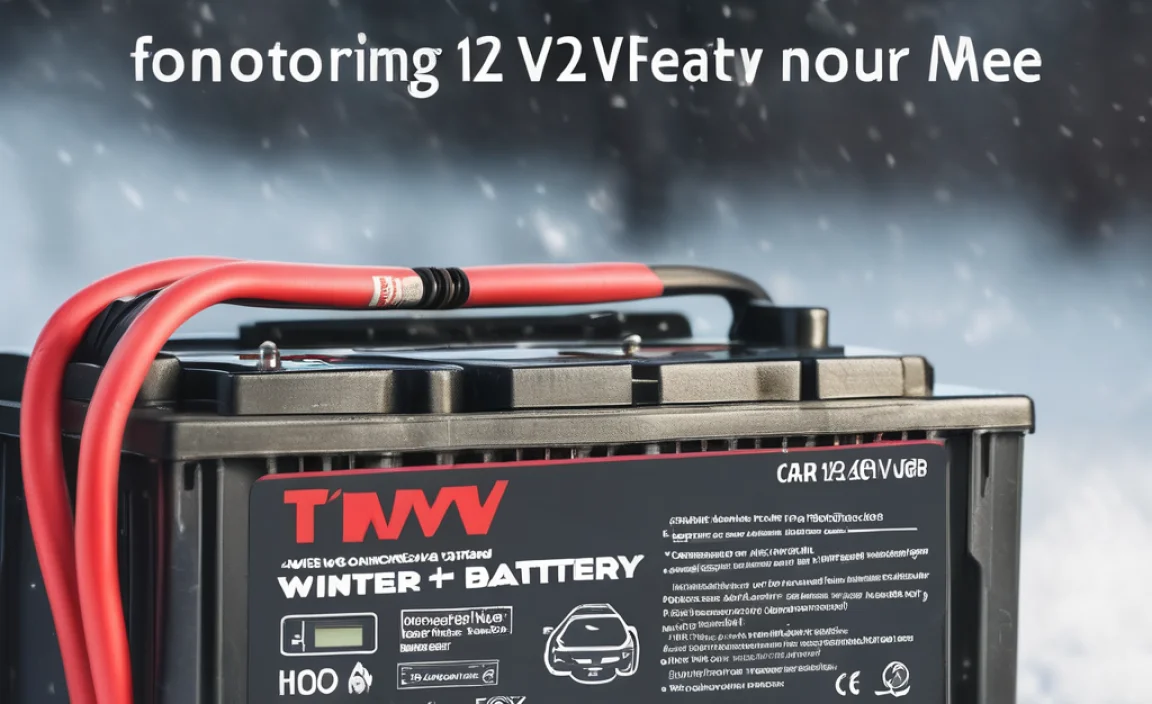Quick Summary
Keep your stop-start car battery charged and ready for summer driving with this simple guide. Learn how to maintain it properly to prevent breakdowns and ensure your car starts reliably, even in hot weather. Simple steps for every car owner!
Summer is here, and that means more road trips and more time spent driving. For many of us, a car is essential for getting around, especially during the warmer months. But what happens when your car’s battery starts acting up? A dead battery is one of the most frustrating car problems, and it can easily ruin your plans. This is especially true for modern cars with stop-start technology, which put extra demands on the battery. Don’t let a battery issue leave you stranded. We’ll walk you through everything you need to know – from understanding your battery to giving it the right charge for the summer. You’ll feel confident knowing your car is ready for any adventure.
Why Summer Demands More From Your Stop-Start Battery
You might be surprised to learn that summer heat isn’t exactly a battery’s best friend. While we enjoy hotter weather, this can put a surprising amount of stress on your car’s battery. This is especially true for the batteries in cars equipped with stop-start systems. These systems, designed to save fuel by shutting off the engine when you’re stopped, require a robust battery that can handle frequent restarts.
When the temperature climbs, the chemical reactions inside your battery speed up. This can lead to faster self-discharge and can also make the battery work harder. Think of it like running a marathon on a hot day – it takes more energy and puts more strain on your system. For a stop-start battery, which already cycles on and off frequently, this extra heat can shorten its lifespan if not managed properly.
Additionally, summer driving often means using more accessories simultaneously. Air conditioning blasting, the radio playing, maybe even charging your phone – all these draw power. Your battery has to keep up with both starting the engine periodically and powering these accessories, all while battling the heat. Regular checks and proper charging can make a world of difference in ensuring your battery performs reliably throughout the summer months.
Understanding Your Stop-Start Battery
Cars with stop-start technology use special batteries designed to handle the constant demands of this feature. These are typically Enhanced Flooded Batteries (EFB) or Absorbed Glass Mat (AGM) batteries. They’re built to withstand more charge and discharge cycles than a traditional car battery.
- EFB Batteries: These are a step up from standard flooded batteries. They have a higher performance level and are suitable for vehicles with basic stop-start functions and some accessories.
- AGM Batteries: These are the premium choice. They use fiberglass mats to absorb the electrolyte. AGM batteries offer superior performance, longevity, and can handle the demands of more complex stop-start systems and a higher number of electrical accessories.
Knowing which type of battery you have is important because it affects how you should charge and maintain it. Your car’s manual should tell you what type of battery is installed or recommended. If you’re unsure, many auto parts stores can help you identify it based on your car’s make, model, and year.
Why are stop-start batteries different?
The key difference lies in their design and construction to handle deep cycling. A regular battery is primarily designed to provide a big burst of power to start the engine. Once the engine is running, the alternator takes over. Stop-start batteries, however, need to be able to discharge and recharge much more frequently as the engine shuts off and starts again. They are built to be more resilient to these repeated cycles, and in the case of AGM batteries, they also handle voltage fluctuations better.
When to Charge Your Stop-Start Battery
It’s not always about waiting for your car to show signs of trouble. Proactive charging can prevent problems before they start, especially as summer hits. Here are some common scenarios when charging might be a good idea:
- Before a long trip: Ensure your battery is fully charged for extended periods of driving.
- After periods of inactivity: If your car has been sitting for a while, especially in colder weather before summer, it might have lost some charge.
- If you notice slower cranking: If the engine sounds like it’s struggling to start, it’s a clear sign the battery might need a charge.
- Frequent short journeys: If you mostly drive short distances, your alternator might not have enough time to fully recharge the battery.
- If using many accessories: When running lots of electrical devices, the battery works harder.
It’s also beneficial to perform a battery health check annually. A qualified mechanic can test your battery’s voltage and cranking amps to see its overall condition. If it’s showing signs of weakness, charging it can extend its life and ensure reliability.
Essential Tools and Supplies
Before you start charging your battery, gathering the right tools is crucial for safety and effectiveness.
What You’ll Need:
- Battery Charger: A charger specifically designed for automotive batteries is essential. For stop-start batteries (EFB and AGM), it’s best to use a smart or multi-stage charger that can detect the battery type and adjust the charging current accordingly. Some advanced chargers have modes for AGM or EFB batteries.
- Safety Glasses: To protect your eyes from any potential sparks or battery acid.
- Gloves: To keep your hands clean and protect them from battery acid.
- Wire Brush or Battery Terminal Cleaner: To clean any corrosion from the battery terminals and cables, ensuring a good connection.
- Wrench or Pliers: To disconnect and reconnect the battery terminals if needed (though most smart chargers don’t require disconnecting the battery).
Always ensure your charger is in good condition and follow the manufacturer’s instructions carefully. Using the wrong type of charger or improper charging methods can damage the battery and even pose safety risks.
How to Charge Your Stop-Start Battery: A Step-by-Step Guide
Charging a stop-start battery is similar to charging a regular car battery, but with a few considerations for its specific technology. Using a smart charger is highly recommended for EFB and AGM batteries. These chargers automatically adjust voltage and current, preventing overcharging and damage.
Step-by-Step Charging Process:
- Park Safely: Find a well-ventilated area, preferably outdoors or in an open garage. Turn off your car’s engine and remove the keys from the ignition.
- Locate the Battery: Open the hood and find your car battery. It’s usually in the front of the engine bay, but check your car’s manual if you’re unsure.
- Inspect the Battery: Look for any signs of damage, leaks, or corrosion on the terminals. If the terminals are corroded, clean them with a wire brush. Corrosion can prevent a good electrical connection.
- Connect the Charger (Safely!):
- Ensure the charger is unplugged from the power source.
- Connect the red (+) clamp of the charger to the positive (+) terminal of the battery. The positive terminal is usually marked with a “+” sign and may have a red cover.
- Connect the black (-) clamp of the charger to the negative (-) terminal of the battery. The negative terminal is usually marked with a “-” sign and may have a black cover. Some recommend connecting the negative clamp to a metal ground point on the car’s chassis instead of the battery terminal itself to reduce the risk of sparks. Consult your charger and car manual.
- Select the Correct Setting: If your charger has different modes, select the appropriate setting for your battery type (e.g., AGM, EFB, or a standard mode if suitable for your battery). Most modern smart chargers have an auto-detect feature.
- Plug In and Charge: Plug the battery charger into a power outlet. The charger will then begin the charging process. Most smart chargers will indicate the charging status, often with lights or a digital display.
- Monitor the Charging Process: Smart chargers typically manage the entire process. They will stop charging automatically when the battery reaches full charge or may switch to a maintenance mode. Avoid leaving a basic charger connected for too long, as it can overcharge and damage the battery.
- Disconnect the Charger: Once charging is complete (indicated by the charger), unplug the charger from the power outlet before disconnecting the clamps. Then, detach the black (-) clamp first, followed by the red (+) clamp.
- Close and Start: Close the hood and you’re ready to start your car.
Always refer to your specific battery charger and car owner’s manual for detailed instructions and safety warnings. For more information on battery maintenance, organizations like Energy.gov’s Vehicle Battery Maintenance page offer valuable insights.
Smart Chargers vs. Traditional Chargers
When it comes to charging your sophisticated stop-start battery, the type of charger you use makes a big difference. Smart chargers are specially designed to take the guesswork out of battery charging.
Smart Chargers: The Modern Solution
A smart charger, also known as a multi-stage charger, is the best choice for EFB and AGM batteries. Here’s why:
- Automatic Voltage and Current Adjustment: These chargers constantly monitor the battery’s voltage and adjust the charging rate accordingly. This prevents overcharging, which can damage the battery and reduce its lifespan.
- Battery Type Recognition: Many smart chargers can detect whether you have an AGM, EFB, or standard lead-acid battery and automatically select the optimal charging profile.
- Multi-Stage Charging: They use several stages (e.g., bulk, absorption, float) to charge the battery efficiently and safely, ensuring a full charge without stressing the battery.
- Desulfation Mode: Some advanced models can even help to reverse sulfate buildup, a common issue that degrades battery performance.
- Maintenance Mode: Once fully charged, many smart chargers will enter a maintenance mode, keeping the battery topped up without overcharging. This is perfect for cars that aren’t driven daily.
Traditional Chargers: Limited Usefulness
Older, basic chargers often provide a constant voltage and current. While they can charge a battery, they lack intelligence:
- Risk of Overcharging: If left connected for too long after the battery is full, they can vent gases, overheat, and permanently damage the battery plates.
- No Battery Type Optimization: They don’t adjust for the specific needs of EFB or AGM batteries.
- Manual Monitoring Required: You often have to manually disconnect the charger once you believe the battery is charged, which requires some experience.
For stop-start vehicles, investing in a quality smart charger is a wise decision. It protects your investment in a more advanced battery system.
Maintaining Your Battery for Summer Heat
Beyond just charging, a few simple maintenance steps can help your stop-start battery survive and thrive in the summer heat.
Key Maintenance Tips:
- Keep Terminals Clean: As mentioned, corrosion is battery’s enemy. Regularly check and clean the battery terminals with a wire brush and a mixture of baking soda and water. Rinse with clean water and dry thoroughly. This ensures maximum conductivity.
- Check Battery Mounting: Ensure the battery is securely fastened in its tray. A loose battery can vibrate, damaging its internal components and leading to premature failure.
- Inspect for Leaks: Look for any signs of leakage or damage to the battery casing. If you see any, the battery might need replacement immediately.
- Avoid Deep Discharges: Try to avoid draining your battery completely, especially in hot weather. This puts significant stress on the battery. If you have to leave accessories on, be mindful of how long they are powered.
- Regular Driving: The best way to keep a battery healthy is regular use. Driving your car regularly allows the alternator to recharge the battery properly. If you primarily make short trips, consider taking it for longer drives occasionally to ensure a full charge.
- Check Battery Age: Car batteries typically last 3-5 years. If your battery is approaching this age, especially heading into the demanding summer season, consider having it tested and potentially replaced preventatively. A failing battery is much more problematic in extreme heat.
Proper maintenance ensures your battery is in optimal condition to handle the increased electrical demands and temperatures of summer.
Troubleshooting Common Battery Issues
Even with good maintenance, you might encounter a few common problems. Here’s how to handle them:
What to Do When…
- The engine cranks slowly: This is a classic sign of a weak battery. Try charging the battery. If the problem persists after charging, the battery may be old or damaged and needs replacement.
- The car won’t start at all (no sound): This is often a dead battery or a connection issue. Check that the battery terminals are clean and tight. If they are, a full charge is needed. If still no power, it could be a more serious electrical issue, including a faulty starter or alternator.
- Warning lights on the dashboard: Many modern cars have a battery warning light or a general electrical system warning light. This could indicate a low charge, a failing battery, or an issue with the alternator; get it checked professionally.
- Battery is bulging or leaking: This is a serious issue, often caused by overcharging or extreme heat. The battery is compromised and must be replaced immediately. Do not attempt to charge a visually damaged battery.
If you’re ever unsure or uncomfortable with troubleshooting, it’s always best to consult a qualified mechanic. They have the tools and expertise to diagnose and fix battery and electrical system problems safely.
Battery Lifespan and Replacement
The lifespan of your stop-start EFB or AGM battery can vary. Factors like climate, driving habits, and maintenance all play a role. On average, you can expect:
- EFB Batteries: Typically last 3-5 years.
- AGM Batteries: Can last 5-8 years, sometimes longer, due to their more robust design.
However, harsh summer heat can shorten these lifespans. If your battery is nearing the end of its expected life, or if it starts showing signs of weakness, it’s prudent to consider replacement before a breakdown occurs.
When to Replace Your Battery:
- Age: If it’s over 3-4 years old for an EFB or 5-6 years for an AGM, especially if it’s been through several hot summers.
- Performance Degradation: If you notice a consistent decline in starting power, even after charging.
- Terminal Corrosion: Excessive, recurring corrosion can indicate internal problems.
- Physical Damage: Bulging, leaking, or cracked casings are immediate signs for replacement.
- Failed Load Test: A mechanic testing your battery might report that it fails a load test, meaning it can’t hold a sufficient charge under demand.
Replacing a stop-start battery is similar to replacing a standard one, but it’s crucial to ensure the replacement is the correct type (EFB or AGM) and of comparable or better quality. Incorrect battery types can cause system errors or premature failure. Many mechanics and auto parts stores offer battery testing and replacement services.
Summary Table: Stop-Start Battery Care
Here’s a quick reference for keeping your battery in top shape:
| Aspect | Summer Focus | Action to Take |
|---|---|---|
| Charging Frequency | Higher demand due to heat & accessories. | Charge before long trips, after inactivity, or if cranking is slow. Use a smart charger. |
| Terminal Condition | Heat can exacerbate corrosion. | Clean terminals regularly with a wire brush and cleaner. Ensure a tight connection. |
| Driving Habits | Short trips with A/C strain battery. | Take longer drives to allow alternator to fully recharge. |
| Battery Age | Heat tests older batteries more severely. | Test batteries over 3-4 years old before summer; consider proactive replacement. |
| Accessory Use | Increased use (A/C, electronics). | Be mindful of battery drain. Avoid leaving accessories on extensively when the engine is off. |
Frequently Asked Questions (FAQ)
Q1: Can I use a regular charger on my stop-start battery?
It’s best to use a charger specifically designed for EFB or AGM batteries, often called a “smart charger” or “multi-stage charger.” These can detect the battery type and adjust charging accordingly. A regular charger might lack the correct voltage profile and could damage the battery.
Q2: How often should I charge my stop-start battery?
For daily drivers, the alternator usually keeps the battery charged. However, if you only make short trips, or if the car sits unused for periods, charging might be needed every few weeks



